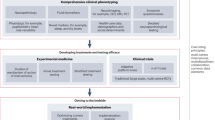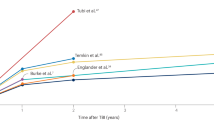Abstract
The term chronic traumatic encephalopathy (CTE) has recently entered public consciousness via media reports and even a Hollywood movie. However, in contrast to general impressions, the incidence of CTE is unknown, the clinical diagnostic criteria have not been agreed upon and the current neuropathological characterization of CTE is acknowledged as preliminary. Additionally, few studies have compared the pathologies of CTE with those of other neurodegenerative disorders or of age-matched controls. Consequently, disagreement continues about the neuropathological aspects that make CTE unique. Furthermore, CTE is widely considered to be a consequence of exposure to repeated head blows, but evidence suggests that a single moderate or severe traumatic brain injury can also induce progressive neuropathological changes. These unresolved aspects of CTE underlie disparate claims about its clinical and pathological features, leading to confusion among the public and health-care professionals alike.
This is a preview of subscription content, access via your institution
Access options
Access Nature and 54 other Nature Portfolio journals
Get Nature+, our best-value online-access subscription
$29.99 / 30 days
cancel any time
Subscribe to this journal
Receive 12 print issues and online access
$209.00 per year
only $17.42 per issue
Buy this article
- Purchase on Springer Link
- Instant access to full article PDF
Prices may be subject to local taxes which are calculated during checkout


Similar content being viewed by others
References
Landesman, P. Concussion [film]. (Columbia Pictures, 2015).
Ward, J., Williams, J. & Manchester, S. 110 N.F.L. brains. NYTimes https://www.nytimes.com/interactive/2017/07/25/sports/football/nfl-cte.html (2017).
Mez, J. et al. Clinicopathological evaluation of chronic traumatic encephalopathy in players of American football. JAMA 318, 360–370 (2017).
Wilson, L. et al. The chronic and evolving neurological consequences of traumatic brain injury. Lancet Neurol. 16, 813–825 (2017).
McKee, A. C. et al. The first NINDS/NIBIB consensus meeting to define neuropathological criteria for the diagnosis of chronic traumatic encephalopathy. Acta Neuropathol. 131, 75–86 (2016).
Martland, H. Punch drunk. J. Am. Med. Assoc. 91, 1103–1107 (1928).
Critchley, M. Medical aspects of boxing, particularly from a neurological standpoint. BMJ 1, 357–362 (1957).
Mawdsley, C. & Ferguson, F. R. Neurological disease in boxers. Lancet 2, 795–801 (1963).
Spillane, J. D. Five boxers. BMJ 2, 1205–1210 (1962).
Millspaugh, J. Dementia pugilistica. U.S. Nav. Med. Bull. 35, 297–303 (1937).
Roberts, A. H. Brain Damage in Boxers: a Study of the Prevalence of Traumatic Encephalopathy Among Ex-Professional Boxers (Pitman Medical & Scientific Publishing, 1969).
McKee, A. C. et al. The spectrum of disease in chronic traumatic encephalopathy. Brain 136, 43–64 (2012).
Lehman, E. J., Hein, M. J. & Gersic, C. M. Suicide mortality among retired national football league players who played 5 or more seasons. Am. J. Sports Med. 44, 2486–2491 (2016).
Brandenburg, W. & Hallervorden, J. Dementia pugilistica with anatomical findings [German]. Virchows Arch. Pathol. Anat. Physiol. Klin. Med. 325, 680–709 (1954).
Corsellis, J. A., Bruton, C. J. & Freeman-Browne, D. The aftermath of boxing. Psychol. Med. 3, 270–303 (1973).
Omalu, B. I. et al. Chronic traumatic encephalopathy in a national football league player: part II. Neurosurgery 59, 1086–1092 (2006).
Omalu, B. I. et al. Chronic traumatic encephalopathy in a National Football League player. Neurosurgery 57, 128–134 (2005).
McKee, A. C. et al. Chronic traumatic encephalopathy in athletes: progressive tauopathy after repetitive head injury. J. Neuropathol. Exp. Neurol. 68, 709–735 (2009).
Geddes, J. F., Vowles, G. H., Nicoll, J. A. & Revesz, T. Neuronal cytoskeletal changes are an early consequence of repetitive head injury. Acta Neuropathol. 98, 171–178 (1999).
Ling, H. et al. Mixed pathologies including chronic traumatic encephalopathy account for dementia in retired association football (soccer) players. Acta Neuropathol. 133, 337–352 (2017).
Stewart, W., McNamara, P. H., Lawlor, B., Hutchinson, S. & Farrell, M. Chronic traumatic encephalopathy: a potential late and under recognized consequence of rugby union? QJM 109, 11–15 (2016).
Omalu, B. et al. Chronic traumatic encephalopathy in an Iraqi war veteran with posttraumatic stress disorder who committed suicide. Neurosurg. Focus 31, E3 (2011).
Goldstein, L. E. et al. Chronic traumatic encephalopathy in blast-exposed military veterans and a blast neurotrauma mouse model. Sci. Transl Med. 4, 134ra160 (2012).
Johnson, V. E., Stewart, W. & Smith, D. H. Widespread tau and amyloid-β pathology many years after a single traumatic brain injury in humans. Brain Pathol. 22, 142–149 (2012).
Smith, D. H., Johnson, V. E. & Stewart, W. Chronic neuropathologies of single and repetitive TBI: substrates of dementia? Nat. Rev. Neurol. 9, 211–221 (2013).
Hof, P. R., Knabe, R., Bovier, P. & Bouras, C. Neuropathological observations in a case of autism presenting with self-injury behavior. Acta Neuropathol. 82, 321–326 (1991).
Ling, H. et al. Histological evidence of chronic traumatic encephalopathy in a large series of neurodegenerative diseases. Acta Neuropathol. 130, 891–893 (2015).
Omalu, B. et al. Emerging histomorphologic phenotypes of chronic traumatic encephalopathy in American athletes. Neurosurgery 69, 173–183 (2011).
Johnson, V. E., Stewart, W. & Smith, D. H. Traumatic brain injury and amyloid-β pathology: a link to Alzheimer’s disease? Nat. Rev. Neurosci. 11, 361–370 (2010).
Roberts, G. W., Allsop, D. & Bruton, C. The occult aftermath of boxing. J. Neurol. Neurosurg. Psychiatry 53, 373–378 (1990).
Stein, T. D. et al. β-amyloid deposition in chronic traumatic encephalopathy. Acta Neuropathol. 130, 21–34 (2015).
Neumann, M., Kwong, L. K., Sampathu, D. M., Trojanowski, J. Q. & Lee, V. M. TDP-43 proteinopathy in frontotemporal lobar degeneration and amyotrophic lateral sclerosis: protein misfolding diseases without amyloidosis. Arch. Neurol. 64, 1388–1394 (2007).
Neumann, M. et al. Ubiquitinated TDP-43 in frontotemporal lobar degeneration and amyotrophic lateral sclerosis. Science 314, 130–133 (2006).
Chen-Plotkin, A. S., Lee, V. M. & Trojanowski, J. Q. TAR DNA-binding protein 43 in neurodegenerative disease. Nat. Rev. Neurol. 6, 211–220 (2010).
Geser, F., Martinez-Lage, M., Kwong, L. K., Lee, V. M. & Trojanowski, J. Q. Amyotrophic lateral sclerosis, frontotemporal dementia and beyond: the TDP-43 diseases. J. Neurol. 256, 1205–1214 (2009).
Josephs, K. A. et al. Rates of hippocampal atrophy and presence of post-mortem TDP-43 in patients with Alzheimer’s disease: a longitudinal retrospective study. Lancet Neurol. 16, 917–924 (2017).
King, A. et al. Abnormal TDP-43 expression is identified in the neocortex in cases of dementia pugilistica, but is mainly confined to the limbic system when identified in high and moderate stages of Alzheimer’s disease. Neuropathology 30, 408–419 (2010).
McKee, A. C. et al. TDP-43 proteinopathy and motor neuron disease in chronic traumatic encephalopathy. J. Neuropathol. Exp. Neurol. 69, 918–929 (2010).
Payne, E. E. Brains of boxers. Neurochirurgia (Stuttg.) 11, 173–188 (1968).
Saing, T. et al. Frontal cortex neuropathology in dementia pugilistica. J. Neurotrauma 29, 1054–1070 (2012).
Neubuerger, K. T., Sinton, D. W. & Denst, J. Cerebral atrophy associated with boxing. AMA Arch. Neurol. Psychiatry 81, 403–408 (1959).
Nowak, L. A., Smith, G. G. & Reyes, P. F. Dementia in a retired world boxing champion: case report and literature review. Clin. Neuropathol. 28, 275–280 (2009).
Cherry, J. D. et al. Microglial neuroinflammation contributes to tau accumulation in chronic traumatic encephalopathy. Acta Neuropathol. Commun. 4, 112 (2016).
Grahmann, H. & Ule, G. Diagnosis of chronic cerebral symptoms in boxers (dementia pugilistica & traumatic encephalopathy of boxers) [German]. Psychiatr. Neurol. (Basel) 134, 261–283 (1957).
Drachman, D. & Newall, K. Case 12–1999 — a 67-year-old man with three years of dementia. N. Engl. J. Med. 340, 1269–1277 (1999).
Guo, Z. et al. Head injury and the risk of AD in the MIRAGE study. Neurology 54, 1316–1323 (2000).
Fleminger, S., Oliver, D. L., Lovestone, S., Rabe-Hesketh, S. & Giora, A. Head injury as a risk factor for Alzheimer’s disease: the evidence 10 years on; a partial replication. J. Neurol. Neurosurg. Psychiatry 74, 857–862 (2003).
Nordstrom, P., Michaelsson, K., Gustafson, Y. & Nordstrom, A. Traumatic brain injury and young onset dementia: a nationwide cohort study. Ann. Neurol. 75, 374–381 (2014).
Wang, H. K. et al. Population based study on patients with traumatic brain injury suggests increased risk of dementia. J. Neurol. Neurosurg. Psychiatry 83, 1080–1085 (2012).
Plassman, B. L. et al. Documented head injury in early adulthood and risk of Alzheimer’s disease and other dementias. Neurology 55, 1158–1166 (2000).
Gardner, R. C. et al. Dementia risk after traumatic brain injury versus nonbrain trauma: the role of age and severity. JAMA Neurol. 71, 1490–1497 (2014).
DeKosky, S. T., Blennow, K., Ikonomovic, M. D. & Gandy, S. Acute and chronic traumatic encephalopathies: pathogenesis and biomarkers. Nat. Rev. Neurol. 9, 192–200 (2013).
Johnson, V. E. et al. Inflammation and white matter degeneration persist for years after a single traumatic brain injury. Brain 136, 28–42 (2013).
Hay, J., Johnson, V. E., Smith, D. H. & Stewart, W. Chronic traumatic encephalopathy: the neuropathological legacy of traumatic brain injury. Annu. Rev. Pathol. 11, 21–45 (2016).
Smith, C., Graham, D. I., Murray, L. S. & Nicoll, J. A. Tau immunohistochemistry in acute brain injury. Neuropathol. Appl. Neurobiol. 29, 496–502 (2003).
Smith, D. H. et al. Accumulation of amyloid β and tau and the formation of neurofilament inclusions following diffuse brain injury in the pig. J. Neuropathol. Exp. Neurol. 58, 982–992 (1999).
Smith, D. H., Chen, X. H., Iwata, A. & Graham, D. I. Amyloid β accumulation in axons after traumatic brain injury in humans. J. Neurosurg. 98, 1072–1077 (2003).
Chen, X. H. et al. Long-term accumulation of amyloid-β, β-secretase, presenilin-1, and caspase-3 in damaged axons following brain trauma. Am. J. Pathol. 165, 357–371 (2004).
Roberts, G. W., Gentleman, S. M., Lynch, A. & Graham, D. I. βA4 amyloid protein deposition in brain after head trauma. Lancet 338, 1422–1423 (1991).
Roberts, G. W. et al. β amyloid protein deposition in the brain after severe head injury: implications for the pathogenesis of Alzheimer’s disease. J. Neurol. Neurosurg. Psychiatry 57, 419–425 (1994).
Ikonomovic, M. D. et al. Alzheimer’s pathology in human temporal cortex surgically excised after severe brain injury. Exp. Neurol. 190, 192–203 (2004).
Nicoll, J. A., Roberts, G. W. & Graham, D. I. Apolipoprotein E epsilon 4 allele is associated with deposition of amyloid β-protein following head injury. Nat. Med. 1, 135–137 (1995).
Johnson, V. E. et al. A neprilysin polymorphism and amyloid-β plaques after traumatic brain injury. J. Neurotrauma 26, 1197–1202 (2009).
Johnson, V. E., Stewart, W., Trojanowski, J. Q. & Smith, D. H. Acute and chronically increased immunoreactivity to phosphorylation-independent but not pathological TDP-43 after a single traumatic brain injury in humans. Acta Neuropathol. 122, 715–726 (2011).
Acknowledgements
The authors’ work is supported by funding from the US National Institute of Neurological Disorders and Stroke of the NIH under award numbers R01NS092398, R01NS094003 and R01NS038104.
Author information
Authors and Affiliations
Contributions
All authors contributed equally to all aspects of the article.
Corresponding author
Ethics declarations
Competing interests
The authors declare no competing interests.
Additional information
Publisher’s note
Springer Nature remains neutral with regard to jurisdictional claims in published maps and institutional affiliations.
Rights and permissions
About this article
Cite this article
Smith, D.H., Johnson, V.E., Trojanowski, J.Q. et al. Chronic traumatic encephalopathy — confusion and controversies. Nat Rev Neurol 15, 179–183 (2019). https://doi.org/10.1038/s41582-018-0114-8
Published:
Issue Date:
DOI: https://doi.org/10.1038/s41582-018-0114-8
This article is cited by
-
The Use of Biofluid Markers to Evaluate the Consequences of Sport-Related Subconcussive Head Impact Exposure: A Scoping Review
Sports Medicine - Open (2024)
-
Soccer (football) and brain health
Journal of Neurology (2024)
-
The benefits of rehabilitation exercise in improving chronic traumatic encephalopathy: recent advances and future perspectives
Molecular Medicine (2023)
-
Psychiatric sequelae of traumatic brain injury — future directions in research
Nature Reviews Neurology (2023)
-
Electroacupuncture alleviates traumatic brain injury by inhibiting autophagy via increasing IL-10 production and blocking the AMPK/mTOR signaling pathway in rats
Metabolic Brain Disease (2023)



